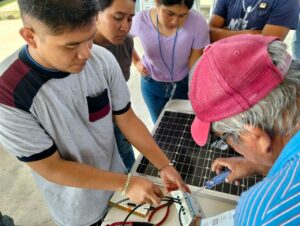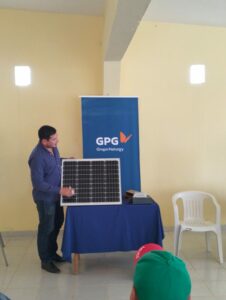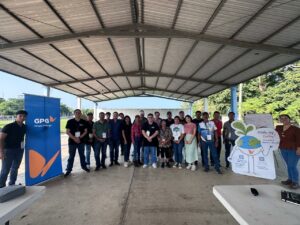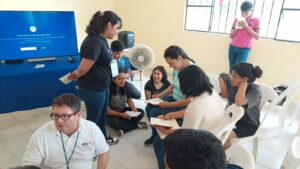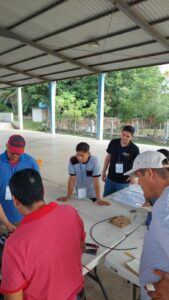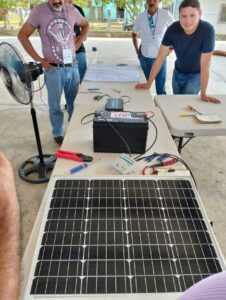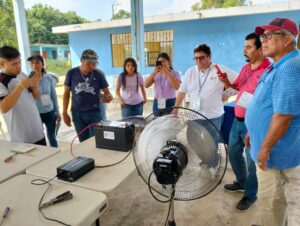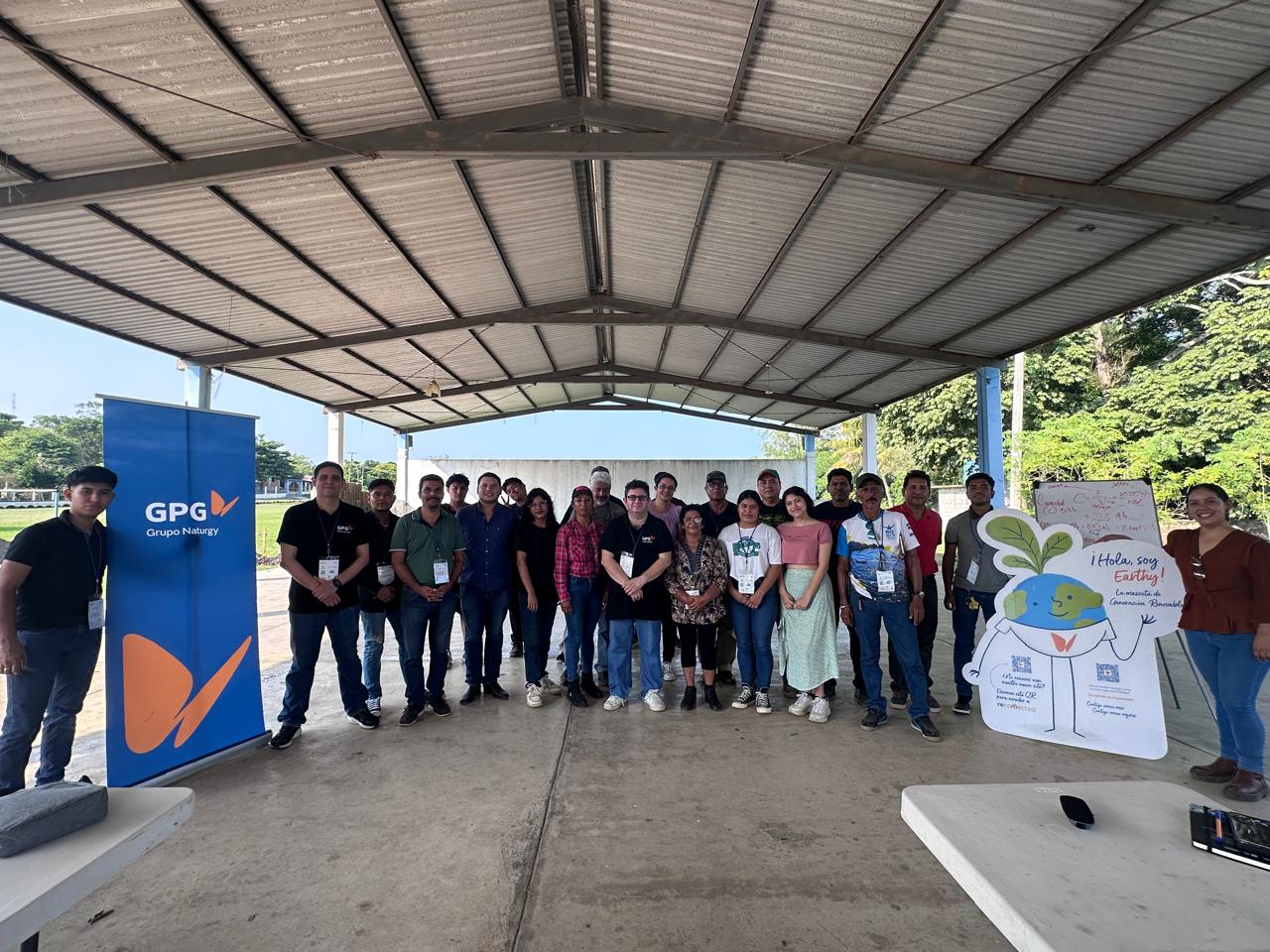On the 9th and 10th of November, the third module of the “Energy School”, organised by the Tuxpan III and IV combined-cycle power stations, took place with great success. Thirty-five people attended, including the community representative from Chaco, as well as allies and volunteers from the communities of the Alianza de la Ruta de los Kilómetros.
In this module we had the presence of engineer Francisco José Cerezo Herrera, assistant manager of the technical control of the Tuxpan III and IV combined-cycle power stations, and engineer Luis Javier Iraheta Vázquez, head of the operations department of Tuxpan III and IV combined-cycle power stations.
During these two days of learning, engineer Francisco Efrén Soto Landa, from the organisation “Tritio Energía Solar” was in charge of teaching the topic of solar panels.
First day
We began with an experiential learning activity that reiterated the role of co-responsibility and participatory leadership towards the communities, as a reminder that the learning that the participants receive should be put into practice in these communities through workshops and projects. This activity was led by Ramadán Salazar, from the corporate social responsibility area.
The engineer Francisco Soto addressed solar thermal and photovoltaic energy and explained the basics of solar radiation, the characteristics of the sun and its components. He also talked about nuclear reactions, the five movements of the Earth and the availability of solar energy in Mexico.
He then went on to talk about photovoltaic energy and how it is produced, or the photovoltaic installations that exist, such as isolated systems and those connected to the electricity grid.
Finally, he explained the existing solar panels, the components that an isolated system must have and the different formulas and calculations for the correct installation of an isolated photovoltaic system.
Second day
The second day of activities was devoted to reviewing what had been learnt in the first session, in order to clear up any doubts.
Francisco Soto showed some photographs of the installations he had carried out, explaining their complexity, the panels he had used and the costs and benefits of each.
To conclude the session and Module III of the Energy School, a practical activity was carried out in which the group was divided into two teams to carry out different activities.
The first team had to work out the formulas for how many components would be needed for a certain installation, while the other team had to connect a solar panel with its various components to power a fan. The participants emphasised the importance of sharing what they had learnt in order to improve the quality of life and solve problems such as the lack of electricity in their communities.
To conclude the activities of the third module, the participants shared, in a word, how they would apply this knowledge in their communities. Some of them were: demonstrate, teach, replicate, communicate, explain, teamwork, together, communally, etc.
“I am interested in installing solar panels, because my mother is diabetic and needs to take insulin, which needs to be refrigerated, but the electricity in the community is constantly cut off and we are left in ruins” said Elizabeth Hernández Maldonado, participant in the module
“I want to learn how to install solar panels, because we can solve problems in the community”explained Angel Mendiola, participant
“I really liked this module, because in addition to the practice of installing solar panels, we learned interesting things like the five different movements of the Earth”said Jimena Reyes Cruz, participant of the module
Some photos from the third module of “Energy School”:
